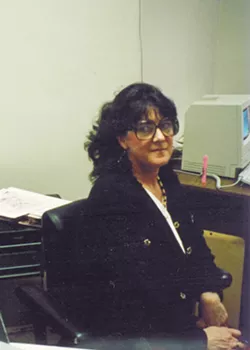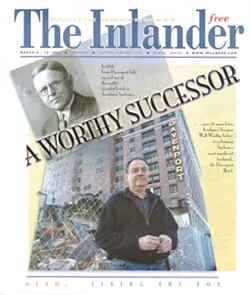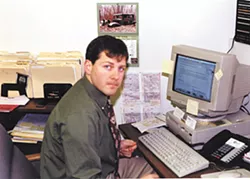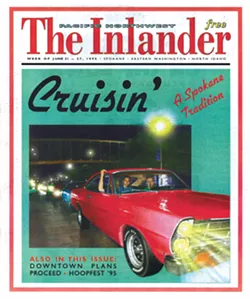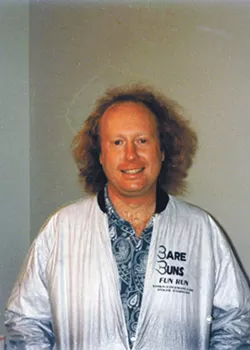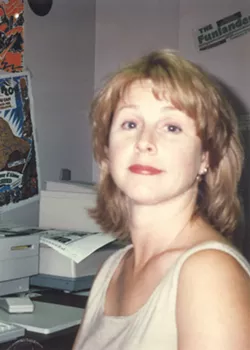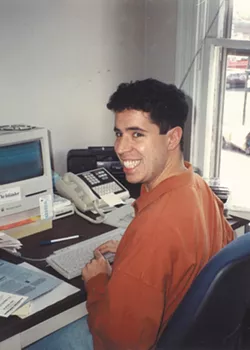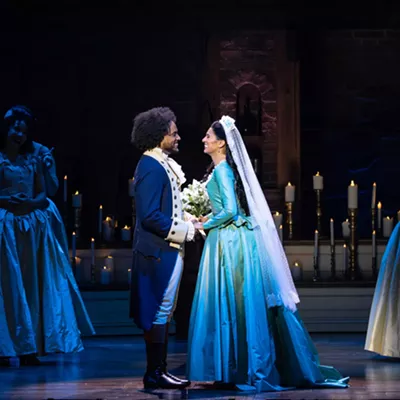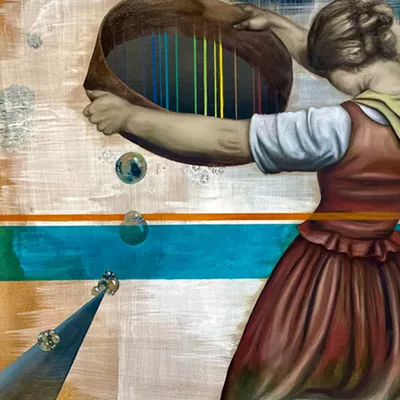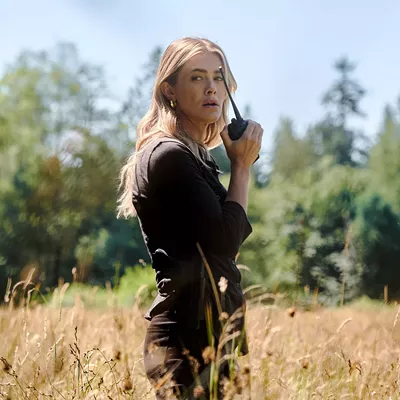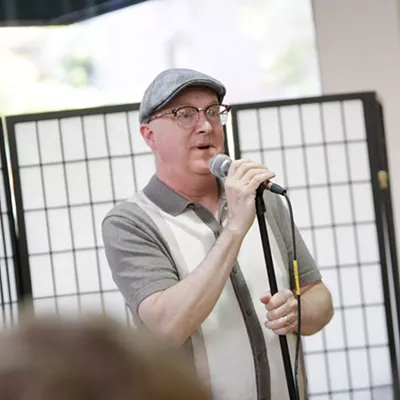The year was 1993, and big stuff was happening in the world. Bill Clinton was going to fix health care. (Still not fixed!) David Letterman moved to CBS, introducing America to Conan O’Brien. And you could buy a share of Apple stock for what a charging adapter costs today. There were big changes for me, too, as after 10 years away from Spokane, I moved home.
I’d been thinking about starting a weekly paper in my hometown since I was at journalism school in Missouri back in 1990; in Boston, with my wife Anne in grad school, we actually started plotting. I had the Spokesman-Review delivered to our Cleveland Circle apartment to keep up with what was going on. I convinced my just-graduated-from-UW brother, Jer, to join as my partner; our mom, Jeanne, stepped up to sell ads — and write more than a few checks to keep making payroll. (We did pay her back!) My Boston friend Andrew Strickman moved West to join the adventure, then Jennifer Minuto Ranney was hired as our first Spokane employee. Ads went out to find writers and artists. (I hoped there would be some!) Great ones who became mainstays answered that first call, like Mike Corrigan, Tony Duarte and Tom Quinn.
Big stuff was happening in the Inland Northwest, too. People were trying to pump up the local arts scene via a Davenport Arts District, but the Davenport Hotel was shuttered. Civic leaders wanted a new arena to replace the creaky old Spokane Coliseum, affectionately known as the Boone Street Barn; they commenced beating their heads against a wall called Spokane voters for two years. And tireless defender of all things Spokane and Eastern Washington, Speaker of the House Tom Foley, was about to get an early retirement. There was a lot for us to cover.
So on Oct. 20, 1993, we rolled out The Pacific Northwest Inlander for the first time. (It took 26 of us!) Then another. And another. And now this one, celebrating those 30 years. To commemorate the occasion, I asked some members of our founding staff (along with other old friends) to share their thoughts about what it was like around here in 1993, along with reflecting on this improbable concoction — powered by the hearts and souls of everyone who ever was a part of our team — that we have called the Inlander every single week since.
— TED S. McGREGOR JR.

MIKE CORRIGAN
Freelance writer; later a staff writerDowntown Spokane was a pretty sleepy place in 1993. With the exception of about a dozen bars, a handful of restaurants and a few decent live music venues, downtown all but shuttered up after 8 pm. Teenagers cruising Riverside still held dominion on Friday and Saturday nights. The Davenport Hotel was largely unused and staring down the wrecking ball. The Fox was a ratty discount theater.
But that was beginning to change as a handful of local entrepreneurs began investing in the renovation of downtown properties that had been languishing for decades. It seemed risky then, but the initial results were successful enough to attract more investment and waves of additional projects throughout the 1990s and early 2000s that would radically transform downtown.
The Inlander was part of that transformational wave, reporting on it and spotlighting local arts and culture in ways that presented a distinct alternative to the local daily paper.
The live music scene in 1993 was actually pretty healthy, it just needed an ally in the local media to spread the word. As someone who was passionate about local music, I was excited to be in a position to help with that, both as a freelancer and later as a staffer.
I had some writing experience when I first came on but was a total newb to the world of journalism — and the concept of weekly deadlines. But I found a lot of support and encouragement there from my editors.
Those first offices in the Georgetown Building behind KXLY were pretty cramped and chaotic. It seemed like magic to me, how a tiny crew of staffers hunched over tiny Mac Classic computers (with 9-inch monochrome screens and questionably reliable 3.5-inch floppy drives) somehow managed to produce a newspaper every week.
And I’ll always appreciate the opportunity the Inlander gave me to indulge my passion for Spokane history, bringing readers along as I explored and reported on the renovation of some of the most iconic downtown properties including the Davenport, the Fox, the Montvale, the Legion Building and the old Schade Brewery building, where my note-taking was frequently interrupted by pigeon attacks.
It was frantic, chaotic, challenging and the best of times for me. With some of the best people I have ever met. Talented, creative, kind, hilarious people all dedicated to helping Spokane thrive culturally and making the Inlander the best weekly newspaper it could be.
TONY C. DUARTE
Freelance writer; later a staff writerWhat was it like around here in 1993? As a longtime resident of Spokane, I feel as though I can answer this question in two ways.
First, since we live in technologically advanced (ha!) times, I will approach it in tech terms: Spokane in 1993 was like a start-up that had only achieved a few rounds of funding from the angel investors — World’s Fair, Bloomsday, Hoopfest — so it was still very much a work-in-progress.
Second, I think Spokane of 1993 was like one of my favorite sketches from Monty Python’s Flying Circus — the Vocational Guidance Counsellor sketch. In it, Mr. Anchovy, a chartered accountant, would like to be a lion tamer and is willing to purchase his own hat (with “lion tamer” written on it that lights up in big neon letters at night so you can tame them after dark when they’re less stroppy). Like Mr. Anchovy, Spokane was a chartered accountant — but with big lion tamer dreams.
The Inlander — excuse me, Pacific Northwest Inlander — was, for me, a breath of fresh air in the stagnant and stodgy Spokesman-Review-dominated media landscape of 1993 Spokane. It felt as though it was almost rebellious to be writing about something like Boo Radley’s, which some people back then considered to be subversive (in the bad way… because it was definitely subversive in the good way!) in addition to being an outright silly concept for a business. After all, who in their right mind was going to buy a punching nun hand puppet?
With the S-R ignoring such frivolities of the time and the internet not glowering down upon us in all its information-gathering modes, the Inlander was the only place to go to find out about fart cushions, robot toys and punching nun puppets… and Spokane was a better place for it.
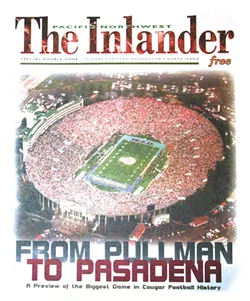
I have many fond memories of the Inlander — most of which I am unable to recount due to three reasons.
1. A massive loss of brain cells over the years. (Vodka is the culprit.)
2. Legal reasons. (My lawyer politely suggests that my recollections could incriminate me.)
3. Others perhaps not viewing my recollections as fondly as their recollections.
However, we did very well one year in the media division of Hoopfest — of this, everybody associated with the Inlander at the time must agree was a very good thing and would certainly qualify as a favorite memory.
KRIS DINNISON
Co-owner of Boo Radley’s, which was featured in a story for our debut issue; later a freelance writerI remember how quiet things were at street level back in 1993. It seemed like everyone left downtown at 5 pm. But I also feel like there was a pretty good band and bar scene, too. Lots of great local bands and places to see them like Henry’s and the Big Dipper. Houses and apartments were inexpensive. Spokane still had that “great place to raise a family” image, so a lot of young people were still fleeing to Portland and Seattle. We knew a lot of amazing, creative, interesting people, so some of them must have been sticking around. The fact that we were able to open Boo Radley’s in 1993 and have it be successful tells you that some of the weirdos must have stuck around.
For me it’s hard to separate the Inlander starting from Boo Radley’s opening. They happened almost simultaneously, and it seemed like, “Yeah. That makes sense for Spokane at this moment.” The great thing about the Inlander was that they could draw attention to a lot of the cool little events and happenings and pockets of creativity that were going on, and highlight them in ways the daily paper wasn’t doing. So suddenly everyone had a place they could go to find out who was playing, or what authors were coming to town, or which plays were being staged. If we had enough going on as a city to fill this weekly paper with interesting events and content, then maybe we weren’t the cultural wasteland we had sometimes convinced ourselves we were. I think the Inlander helped Spokane see itself differently.
That first piece Tony Duarte did in the Inlander about Boo Radley’s meant a lot to us. We still cherish the photo that ran with the article, and it was a real vote of confidence for us as brand-new business owners.
Later I became a freelancer for the Inlander; I always learned something when writing a piece for the paper. For me, interviews with famous people were the most nerve-wracking, but always turned into the most interesting conversations. My favorite interviews were probably with Harry Connick Jr., who was lovely and so generous, and with Patty Duke. She was so candid about her struggles and so gracious to let me talk to her for so long. So I’m grateful to the Inlander for giving me opportunities to learn and stretch myself as a writer.
ANDY DINNISON
Co-owner of Boo Radley’s
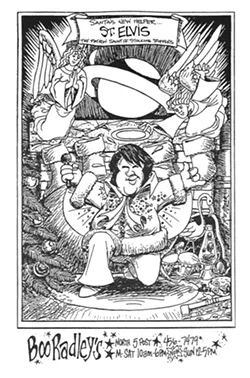
With a lot more going on culturally in Spokane, we needed something to track it all for us in a way that the Spokesman wasn’t doing (or didn’t want to do…). It also coincided with a conscious effort by the Spokesman to quit getting small local advertisers and only concentrate on the big fish. There was a definite niche left for small local advertising.
I made lots of friends who worked at the Inlander. Best Of Inlander parties — some more raucous than others. I remember traipsing around the empty Davenport (first Best Of party?) with Tony Duarte, who spent his childhood running the halls because his dad was the hotel barber. Still buddies with Tony to this day. It was fun to run parallel to y’all over all these years. Happy 30th. Just remember Boo Radley’s is your older sibling by a couple of months!
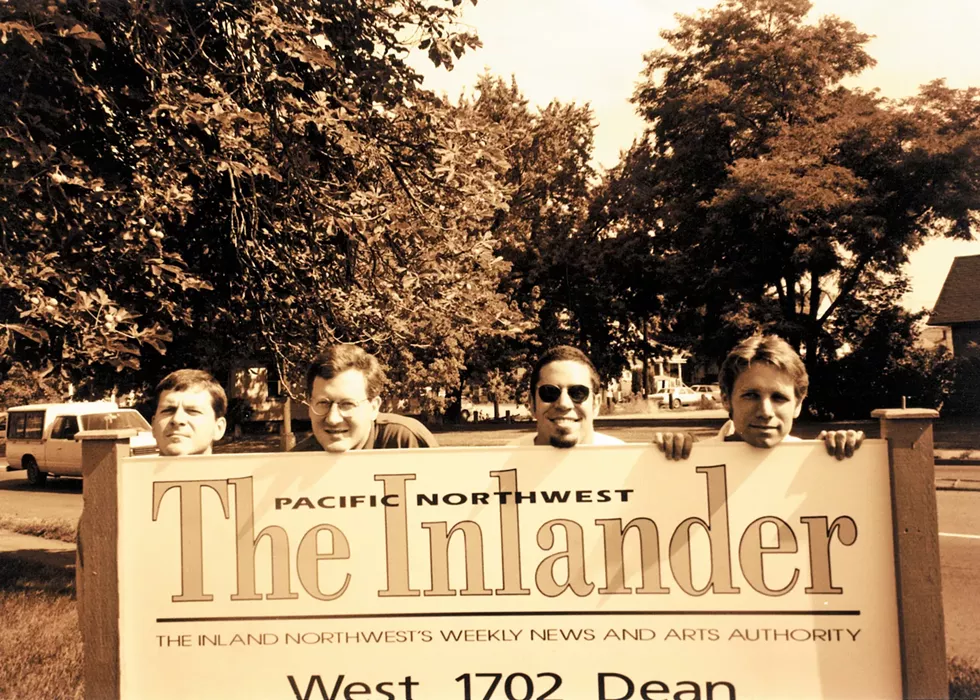
JER McGREGOR
Director of Operations; now General ManagerEarly in 1993, my brother Ted posed a question that, at the time, I had no idea would change the trajectory of the rest of my life. It was something like, “What do you think about moving back to Spokane and starting a weekly newspaper with me?” When you’re 23, you’re kind of looking for adventure, so I thought about it for a bit and said yes.
Then the adventure began.
I suppose the saying that ignorance is bliss might apply to starting a media company in your hometown as much as anything. Ted seemed pretty sharp at business as he figured out how we could rent some office space and lease a copier — and even hire some employees. We spent months working on that first issue, during which I was deep into setting up the distribution plan (with some much needed help from my sister-in-law, Anne, smooth talking businesses into letting us distribute).
Finally the big day came to publish Issue No. 1, and finishing it took all night. The next day out we went to Spokane Print & Mail in Hillyard to watch issues rolling off the press. We printed way too many, but what did we know? I’d lined up as many of my friends as I could to “take a route” so we could get the Inlander out to the people, and off we went.
It was exciting to be doing something that seemed meaningful and full of potential.
That night we went out to celebrate and ended up at the Big Dipper. Somehow the Inlander had worked with Gonzaga University and we already had an intern for our first issue. Mariesa (Mouse, as she was known) brought along one of her college friends, Tamara, to meet the Inlander crew. Again, I didn’t know it at the time, but that chance encounter also changed my life. Tamara and I got married in 1999 and have two amazing kids — Caley and Mason.
The next day Ted reminded me that we now run a “weekly” and another edition was due in a matter of days. The rest is history, or at least 30 years of it.
In getting ready for the 30th anniversary, my brother asked me to comment on significant memories. I remember our 25th anniversary, and feeling like the Inlander had really arrived. We have a great staff, a cool headquarters in Kendall Yards and a strong connection with the active people of the Inland Northwest. Then, fast-forward less than 18 months later, when Spokane, and the world, suddenly came to a screeching halt. The pandemic was devastating for so many, in so many different ways. As seemingly everything shut down in a matter of weeks, it was scary and unprecedented.
I wondered what the Inlander was going to do, how would we work our way through it. Well, we ended up doing what I feel like Inlander is supposed to do. We found partners in the community, and then we found a way to help. With the support of community-minded organizations and the approval of civic leaders, we ended up being a part of the community’s official effort to support both businesses and individuals through the challenging times. Our entire team was tasked with directly communicating with more than 1,000 impacted businesses — writing stories, providing promotion, designing pages and websites that connected locals with local businesses. It was hard, but it was also important. Getting feedback from business owners knowing their community cared and was trying to help — that gave them fuel to keep going and was powerful to hear.
In addition to the year-long Back to Business program, the Inlander also launched the Give Guide Initiative in partnership with Innovia and also the Great Dine Out that supported over 180 area restaurants in partnership with 14 area banks and credit unions who put aside their usual competitiveness to step up in a time of need.
Inlander helped a lot, and I’m proud of that — it’s what I think we’re supposed to do. But like most things, it never would have happened without help. People like Jack Heath and Ezra Eckhardt stood up, and our County Commissioners saw the wisdom of allowing us to play an important part in the recovery effort. But most of all, Marty Dickinson. She is just a special person. The pandemic took a chunk out of just about everyone, and it got me, too. But it also ended up being a moment for the Inlander to shine a light in a dark time.
If I had anything else to say on this 30th anniversary, it would simply be thank you. Thanks to our amazing Inlander staff who have worked hard every day for 30 years to inform, entertain, connect, distribute and collaborate. Thanks to all our advertisers who choose to connect with the active people of the Inland Northwest through the pages of the Inlander. And most of all, thanks to our community-engaged readers. Keeping you informed and connected to everything our amazing community has to offer is the reason the Inlander exists.
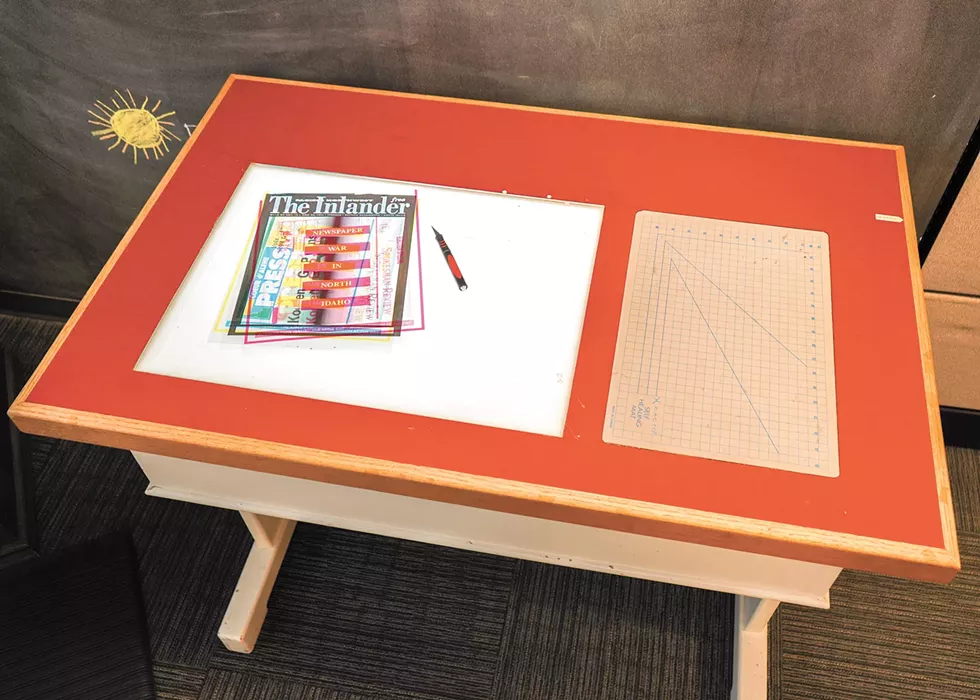
ANNE FLAVELL McGREGOR
Freelance writer; now Editor of Inlander Health & HomeWhen I arrived in Spokane in the late summer of 1993 with my new husband Ted Jr. and his plan to start a weekly newspaper, I remember being impressed with the sunny skies compared to where I grew up outside of Portland. It was probably lucky that I was preoccupied with the weather as, having never been a part of a family business, I had no idea what I was getting into.
I remember one of my first tasks was cold-calling businesses to see if we could distribute our new paper at their locations. It was a testament to the open-heartedness of Spokane that most everyone said, “Sure!” to a “newspaper” no one had seen yet.
We got our office set up with stuff the Crescent had gotten rid of at a going-out-of-business sale. We opted for big, authoritative desks and mid-century side chairs. My dad converted a dinner table I bought at a garage sale while I was in college into a light table, complete with a cutting mat. (It’s still at Inlander HQ today.) It felt like a real office — we were a newspaper! We even had a reception desk!
That cutting mat was key because we had to print each element — story, photo or ad — and cut them out carefully with an Exacto knife, then run the bits of paper through our waxer to stick them onto our proofs. We were pretty proud of that first stack of glued-up pages we took over to the printer in Hillyard. I took a little video with our wedding-gift video camera of Ted and Jer looking pleased with that first issue as it rolled off the press. Then we loaded papers in our cars and drove off to deliver them to all those cheerful folks who agreed to take a chance on us.
In the first issue, under my maiden name Anne Flavell (to avoid too many McGregors on the masthead), I contributed a scintillating story on the arrival of new property assessments and the accompanying tax increases. Then, as now, people were not happy. One time Ted decided to do a groundbreaking story on teens cruising on Riverside. On a Friday night, we hopped in our old Buick comfort sedan, where he decided he would be the “cruising” driver so he could “relate” to the kids. I was in charge of documenting his encounters, furiously scribbling notes in the passenger seat. So, no, not weird at all!

TOM QUINN
Freelance illustrator and writerNineteen ninety-three was a big year for me. It was when I had begun teaching at the Spokane Art School and started getting freelance jobs. One of them was my first mural, on the corner of Sprague and Division, of marmots.
I brought Ted some samples of pictures I had been doing for such obscure magazines as The Greyhound Review and Freshwater and Marine Aquarium, and they got me a regular spot doing the cartoon for “The Last Word” feature.
At that time, other people had cell phones, computers, scanners and fax machines. I had none of those things. I had to come to the Inlander’s office to pick up the article I was illustrating, then draw it and deliver it by deadline.
After about a year, I tried my hand at writing. The first piece I wrote was reprinted across the country on “Alternet,” whatever that was. It took me a while to get used to a reality every professional writer knows: When you write for publication, you get edited. “At least this never happens to artists,” I thought.
But sometimes it did. When I got an assignment to draw Martha Stewart, I wasn’t sure what to caricature. She did have a prominent overbite, I thought, so I gave her one in her picture. Somebody on the staff must not have liked the smile I gave her. I was shocked to see my picture of Martha Stewart with a bizarrely white smile. I had been Photoshopped, and I didn’t even know what that word meant.
By 2002, I stopped getting requests for illustrations and stopped submitting written compositions. I figured it was just as well. I was already older than most of the people on the staff in 1993, and now I’m downright old. The Inlander is a young people’s magazine. I wish it a glorious future.
JENNIFER MINUTO RANNEY
Classified Advertising Manager, first employee hired in SpokaneI was born and raised in the area, and to me Spokane in 1993 was rather sleepy — great for families and not especially interesting if you were in your twenties (which I was when I started at the Inlander). Spokane felt casual and comfortable, like a favorite frayed sweater, and in my mind lacked a certain sophistication of other cities our size. But it was my favorite sweater.
At the time, I handled the Personals and remember a man who recently moved from the East Coast calling in to place an ad. He said he was looking for a woman who held a “Prada purse in one hand and FiloFax in the other.” I responded, “Are you open to a woman with Starbucks in one hand and a snowboard in the other?”
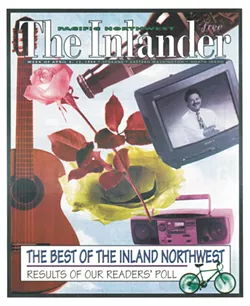
I will never forget my interview at the Inlander, when Ted McGregor said he wanted to start a Seattle Weekly type of publication in Spokane. And while I knew Spokane was hungry for something to shake it up, I wasn’t quite sure it was quite ready for that! I felt the Inlander would either become one of the best things to happen to our city or would go down in flames. Either way, I wanted to be part of it.
The Inlander wrote about new business, championed new ideas and thoughtfully challenged old ideas. The Inlander helped spark imagination of what was possible. It got our city excited, and I saw people advocate for the changes they wanted to see more than I ever had before. Spokane was, indeed, ready for an alternative weekly paper!
My favorite memories boil down to three words: “The Best Of…” I got excited every time we held the annual Best Of readers poll, and I could not wait to see who won. In the beginning, I was the one who tallied up all of the entries that came in (old-school tallying on notebook paper).
And then there was the culture of the office. I don’t know if I have ever worked at a place where I laughed as much, or as hard, as when I worked at the Inlander. My co-workers were some of the smartest, funniest, most dedicated people I had ever met.
I am proud to this day to say I was the first employee of the Inlander! To be on the ground floor of something that continues to be innovative and celebrates Spokane will always be an honor.
REBECCA KING SHIELDS
Art DirectorI’ve forgotten much of my life since 1993, but in reminiscing the standout events of the past 30 years, working for the Inlander holds a prominent place on my list.
I was thrilled to be hired as art director by Ted and Jer for the brand-new arts and entertainment newspaper. It was hard not to be caught up in the enthusiasm of the McGregor family’s dream venture, a family business, including their mom Jeanne. It was all the more exciting because Spokane seemed to be on the precipice of metamorphosing from a small town to a city with a lot to offer. I believe the Inlander was a valuable player in promoting the forthcoming change.
The initial Inlander staffers were great! Savvy, talented, energetic and ready to tackle the vision. Everyone worked long and hard, scrambling to get out the first issue on Oct. 20, 1993. There was unquestionably a learning curve with the logistics of publishing and printing the newspaper, but after some trial and error, the bugs were ironed out.
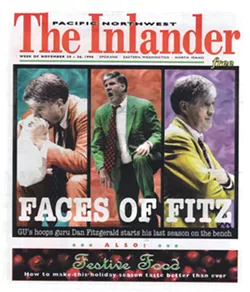
A standout memory centered around the day Spokane had one of the worst ice storms on record, occurring on Tuesday, Nov. 19, the day the Inlander went to press. Fortunately, I had just finished the cover design and downloaded it onto a disc when a falling branch from a tree in my backyard took down the wires to the house. My electricity was out! You could look outside and see transformers popping all across the city. It wasn’t long before all the streetlights and stoplights also went off. The streets were dark and icy, along with everything else. Regardless, the paper must go to press! Despite the dark, icy streets, I managed to get the cover art to the printer. (More luck: Our printer never lost power, so they were able to print the issue.)
Whether creating computer generated art, setting up compositions and photographing them, going on photo shoots or collaborating with numerous gifted illustrators whose art would be incorporated into the final cover, I loved designing the covers.
During those first years of the Inlander, I can’t begin to tell you how often I heard, “I read it in the Inlander.” I would feel that little gush of pride knowing I was part of the team. After 30 years, there’s no question as to the success of the McGregors’ groundbreaking newspaper dream.
ANDREW STRICKMAN
Arts Editor, first employee hired from BostonTo a guy moving from Boston, who listened to a pre-release cassette of Counting Crows’ August and Everything After on repeat during the drive cross-country (amazing that I-90 took me all the way there), Spokane was this amazing well of promise. I remember arriving and feeling as if I’d entered a place stuck in a Twilight Zone between the “old days” and a vision of a modern future. There were industrial artists and amazing musical acts, innovative and exploratory chefs who needed a hungry audience and a Valley that wasn’t ready for change. But most importantly there was this new weekly newspaper, the Inlander, that was trying to make sense of this dichotomy and introduce Spokane to both the new, and the old, finding a throughline of passion and commitment to making the Inland Northwest the best place in the world to live, love and experience life.
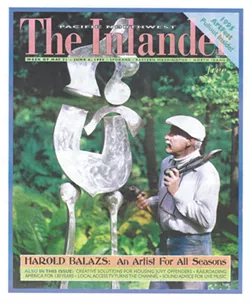
The Inlander didn’t officially come to town to shake things up, but by merely existing, we began to create a counter-narrative to the normal day-to-day that had been standard fare for many years. Of course there’s the memorable story of the representative at the Chamber of Commerce who questioned me derisively when I reported that we were a new newspaper in town. “Why would we need another newspaper?” she asked with a sneer. Well, because we brought a different perspective to a city that valued perspective. Even though the Inlander wanted to live and work and report within existing structures, we didn’t feel that we needed to abide by the old way of doing things to communicate the value and passions of the Inland Northwest.
My favorite memories were of the relationships we built, the camaraderie of doing something different and somewhat maverick in service to a city and region we all loved, and the many late nights spent producing every inch of that paper for more than three years.
In 1994, we first wrote about this newfangled technology called the Internet. But I’ll never forget the night later that year, in April, when we got out from behind our computers and produced a concert at the Met with a band known then as the Cherry Poppin’ Daddies and heard the news that Kurt Cobain had been found dead. It was as if a gut punch had hit our entire audience at once. And then the Daddies went on and played a blistering set. ♦


